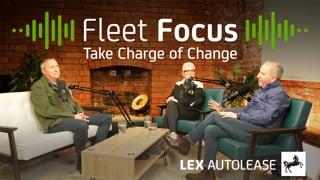Advertisement feature from Zenith
by Alan Bastey, customer relationship director, Zenith 
The reality is that across all fleet sections we need to switch thinking from low-emission to zero-emission right now. We know it’s not always viable to make a full transition straightaway, especially with different asset types and driver segments to consider.
The good news is that by creating a neutral cost position and future-ready policy, you’ll enable your people to take up an electric vehicle (EV) when it works for them, so they canbe introduced to your fleet gradually.
It’s all about enabling choice.
Employees migrate to EVs as company cars because they want a sustainable option but also because of the benefit-in-kind (BIK) tax benefits. The driver’s own cost position promotes this behaviour.
At Zenith, we advocate using wholelife cost when maintaining a company car fleet. An EV is particularly advantageous here when considering the cost of fuel versus charging, BIK and National Insurance contributions.
We’ve supported many customers to incentivise EV take-up by splitting their policy, which offers employees a slightly higher allowance for an EV compared with an internal combustion engine (ICE) vehicle.
This gives them the opportunity to drive a car with a longer range (diminishing range anxiety) and better specification.
You may also consider permitting a trade-up for an EV, which might not be available on the company’s ICE policy to bring EVs within reach for more of your eligible people.
Lastly, a salary sacrifice car scheme could be the best way of encouraging the transition to EVs across all your employees, without the associated responsibility, administration and cost. It’s the benefit everyone is talking about. It works for the employee and employer on every level; cost, compliance and sustainability and it’s an area where our team’s knowledge is second-to-none.

Connect with our experts 0344 848 9311
oneteam@zenith.co.uk zenith.co.uk/futurefleet


















The Engineer - 04/11/2021 17:43
If increase in the uptake of EV's is a priority, and you would think the government would be taking it very seriously then 2 things need fixing. The 4p per mile AFR needs fixing, its been the same since 2018 and in that time electricity cost has pretty much doubled. It no longer works. Secondly some mechanism needs to be sought to reimburse on the road charging at cost, 4p AFR is about 12-16p per kwh, with on the road charging costing 28p+ kwh. Its these 2 factor needed to get higher mileage drivers in EV's. The cars are now here, plenty of 300 mile plus vehicles to buy but the woeful financial system makes them untenable.